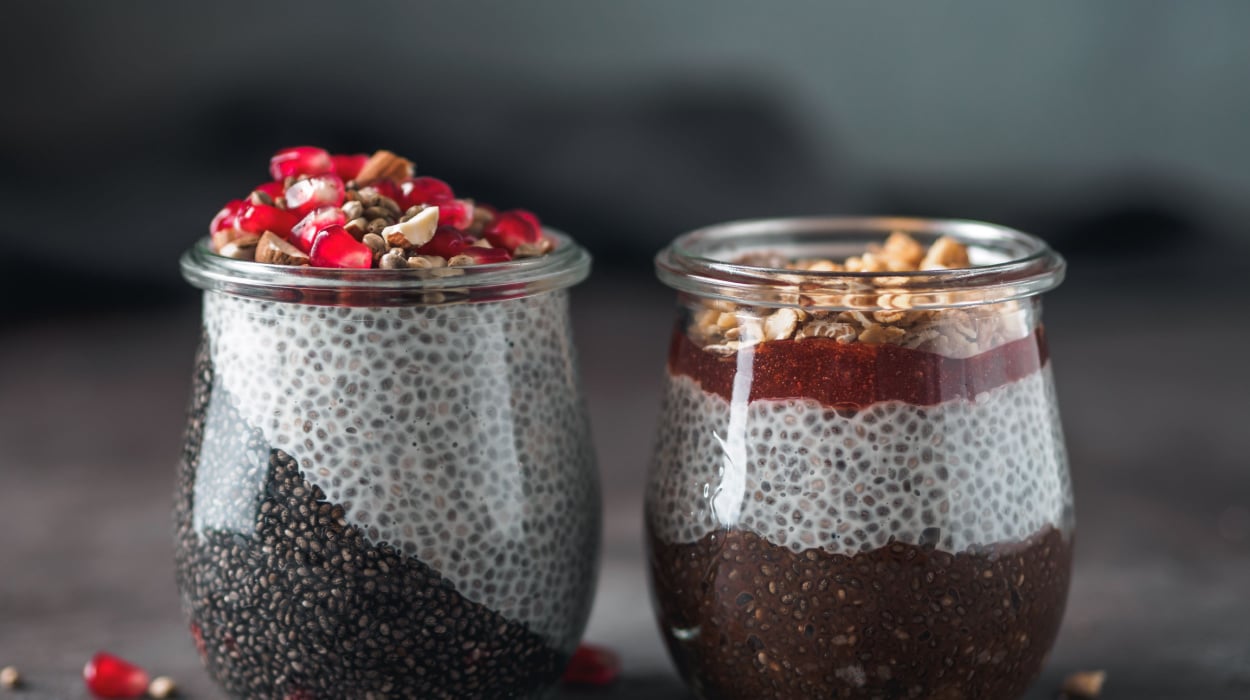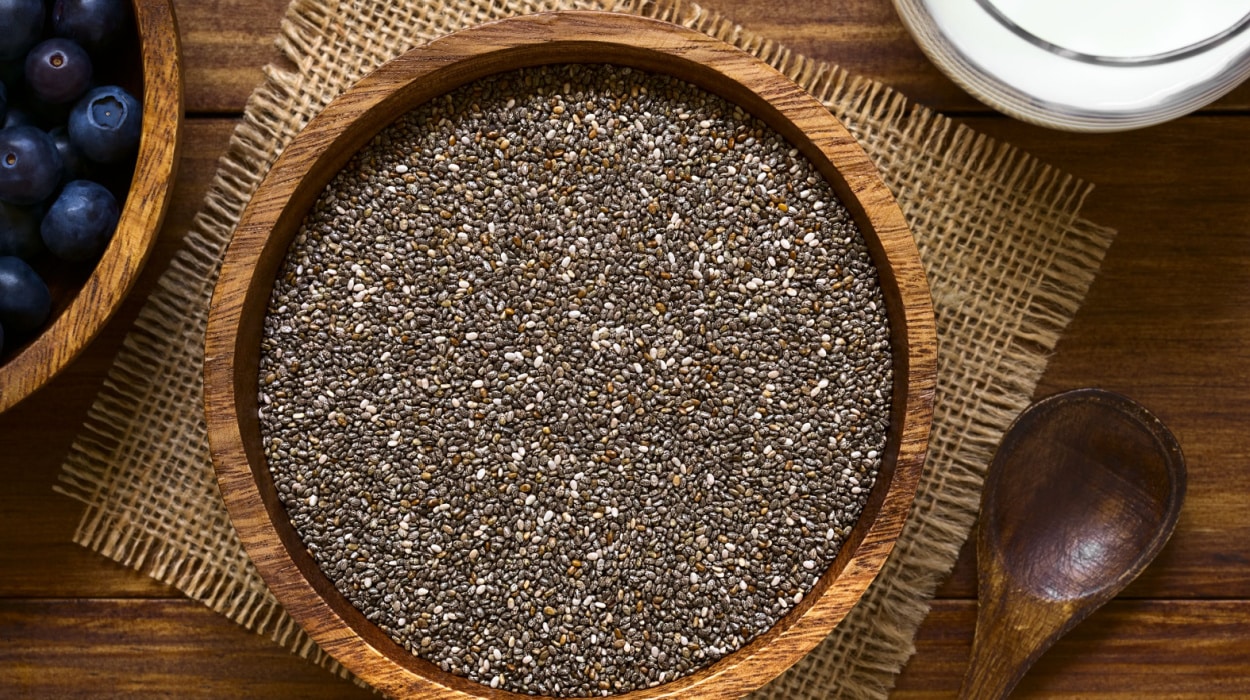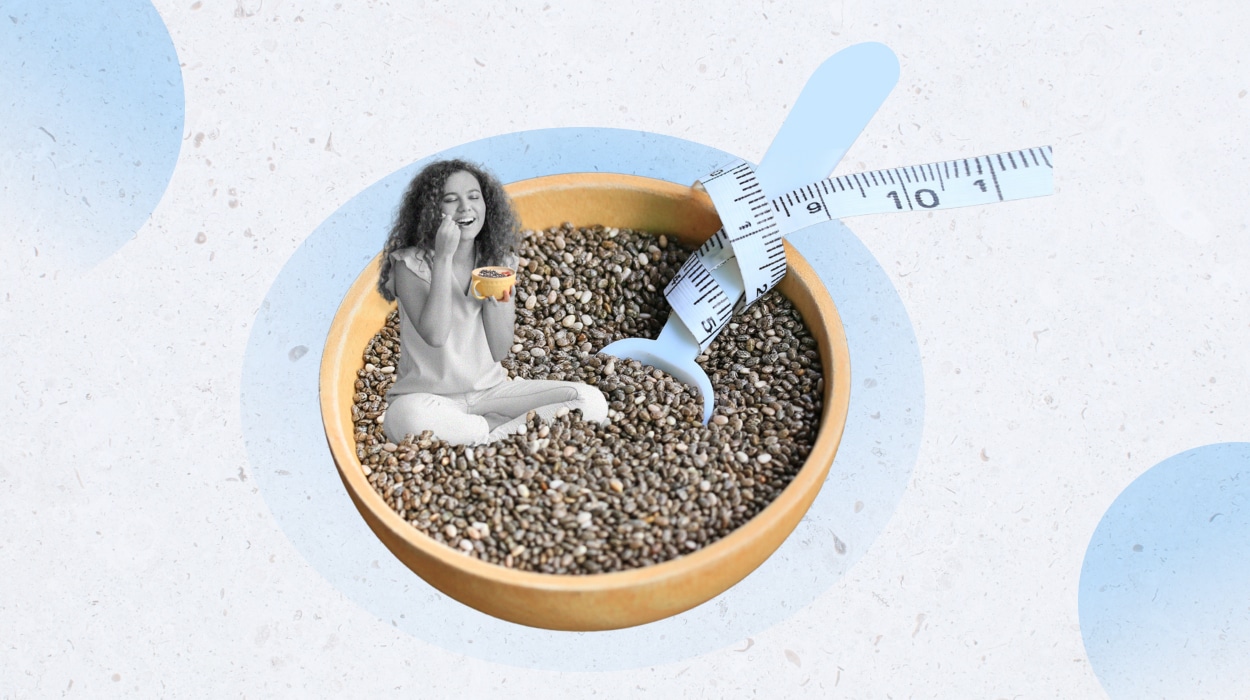The Chia seed, a so-called superfood, has been making waves for quite some time and has been the subject of many debates. These debates have primarily centered around the purported health benefits, including high fiber and protein content, the ability to reduce inflammation, and the ability to lower cholesterol. According to recent studies,[1] the Chia seed has a robust nutritional profile and tremendous health benefits. In this blog, we’ll discuss how these nutritious packets of protein can help you lose weight and how you can start consuming Chia seeds as part of an overall healthy diet.
How To Eat Chia Seeds For Weight Loss?
- Sprinkle them over salads
- Add them to oatmeal
- Mix them into smoothies or fruit juice
- Make chia peanut butter
- Mix into yogurt
- Add to baked goods
- Use as a substitute for eggs in recipes
- Add to soups and salads
- Make a Chia pudding
How To Eat Chia Seeds For Weight Loss?

Sprinkle Them Over Salads
One way to incorporate the nutritional benefits of this extremely rich plant is to sprinkle Chia seeds over your favorite salads. Chia seeds have a mild flavor, so sprinkle a handful over your greens and veggies to add extra crunch without sacrificing taste. In addition, Chia seeds are rich in fiber, potentially reducing the urge to overeat.
Add Them To Oatmeal
Start your day with a nutritious and filling breakfast by stirring a spoonful of Chia seeds into your oatmeal before cooking. The protein-packed addition will add a nutty flavor and extra fiber to your meal. Chia seeds can also help slow down the digestion of carbohydrates, helping you stave off hunger for longer.
Mix Them Into Smoothies Or Fruit Juice
Smoothies and fruit juice are great ways to drink Chia seeds because you can easily mix them into beverages without affecting the flavor. Chia seeds mixed into your favorite smoothie recipe will boost fiber and nutrients. You can also whisk them into a glass of water.
Make Chia Peanut Butter
Making Chia peanut butter at home is a tasty way to add chia seeds to your diet. To make this, mix some Chia seeds and peanut butter (or any nut butter) until smooth. You can also add a sweetener if desired. You can use this spread on toast, sandwiches, or as a dip for fruits or veggies.
Mix Into Yogurt
Adding Chia seeds to your yogurt is another easy way to promote weight loss. To add extra texture and nutrients to your meal, stir one or two tablespoons into plain Greek yogurt. For sweetness, add some pureed berries or other low-sugar fruit.
Add To Baked Goods
Baked goods are another great way to incorporate Chia seeds into your diet. You can add Chia seeds to loaves of bread, muffins, cakes, and more without sacrificing taste. Just mix a handful into your batter or dough before baking. They will add extra fiber, protein, and healthy fats to your baked goods.
Use As A Substitute For Eggs In Recipes
Did you know you can use Chia seeds as a substitute for eggs in recipes? It takes one tablespoon of Chia seeds mixed with three tablespoons of water. After sitting for a moment, it will develop a gel-like consistency. Use as a replacement for eggs in recipes like pancakes or waffles.
Add To Soups And Sauces
Adding Chia seeds to your soups and sauces introduces some extra nutrients and gives your teeth more to chew. Before serving, stir a spoonful of Chia seeds into your soup or sauce and enjoy the added thickness that will keep you feeling full and satisfied.
Make A Chia Seed Pudding
Finally, Chia seed pudding is a heart-healthy addition to any weight loss diet plan. This delicious and nutritious dessert is easy to make. Mix Chia seeds, milk, and any desired flavorings. Let the mixture sit overnight and then enjoy a creamy and satisfying pudding!
How Do Chia Seeds Help With Weight Loss?

The Chia seed comes from the Chia plant. Chia’s scientific name is Salvia hispanica, and it’s a member of the mint family. The tiny, oval-shaped, black and white speckled gray seed is about 2 millimeters wide.
It may be small, but the white chia seeds pack a big punch in nutritional value. So let’s dive in to see why it’s a superfood and how it can help with weight loss!
Fiber
Fiber[2] is an invaluable part of our daily diet. You can find it in whole foods such as fruits, vegetables, grains, and legumes, which is particularly vital if you’re trying to lose weight.
Insoluble fiber, like cellulose, cannot be digested. It improves the consistency of our digestive material and physically helps push waste through our bowels. Eating chia seeds helps regulate our digestive system, removing cholesterol and harmful chemicals from our bodies.
Chia seed water oozes dietary fiber as a gel, helping digestive system regulation, blood sugar control, and promoting feelings of fullness. In addition, Chia seeds contain 40%[3] fiber, making them of fantastic nutritional value while boosting the fiber content of our diet. All these factors contribute to successfully losing weight.
Antioxidants
Antioxidants are potent substances that protect our cells from damage. They work by slowing down the process of oxidation, which can cause harm to our cells by creating free radicals. Free radicals are molecules with unpaired electrons, which makes them highly reactive. As a result, they can damage DNA, proteins, and other cellular components, leading to cell death or mutations. Antioxidants can neutralize free radicals by donating electrons, thus preventing them from causing further damage.
Chia seeds are also a potent source of antioxidants, including chlorogenic acid, caffeic acid, myricetin, quercetin, and kaempferol. These antioxidants have been shown[4] to benefit the heart and liver and can help protect against aging and certain types of cancer.
Omega-3 Fatty Acids
Also called omega-3 oils, these good fats are essential for overall health and play critical roles in our body’s digestion and overall functioning. These fatty acids are found in various plant and animal sources but are most abundant in vegetable oils, nuts, and seeds.
One of the unique qualities[5] of chia seeds is their high omega-3 fatty acids, which are beneficial for heart health. Eating more omega-3 fatty acids has been linked with lower rates of inflammation and long-term diseases like heart disease, cancer, and premature death. They also have beneficial effects on blood pressure, cholesterol levels, and insulin sensitivity, which may help reduce the risk of obesity and aid weight loss.
Peptides
Peptides are short-chain amino acids. The unique structures of the proteins and peptides found in Chia seeds may have powerful properties.
Researchers have discovered the compound’s wide range of health benefits, including antioxidant properties, anti-hypertensive properties, anti-hyperglycemic properties, anti-inflammatory properties, and anticholesterolemic properties.
Amino acids can also help improve inflammatory bowel disease, reduce blood pressure, and increase energy levels: All things that help promote weight loss.
Vitamins
Vitamins are essential micronutrients the body needs in small amounts to keep cells functioning correctly.[6] Chia seeds are a good source of B vitamins, including niacin, folic acid, thiamine, and riboflavin. In addition, Chia seeds can help boost metabolism and absorb fat-soluble vitamins like A, D, E, and K.
Minerals
Minerals are essential inorganic components[7] found on the earth that play a crucial role in the functioning and growth of biological systems. For example, Chia seeds are a rich source of manganese, phosphorus, copper, selenium, iron, magnesium, and calcium essential minerals.
Just like vitamins, minerals are crucial for our overall health and body function. They are used for various processes[8] in the body, from building strong bones to transmitting nerve impulses.
Potential Risks When Using Chia Seeds For Weight Loss
While Chia seeds are generally safe for most people, some may experience digestive issues such as bloating, gas, or constipation when consuming large amounts. Additionally, people with sesame or mustard seed allergies may also have an allergic reaction to Chia seeds. Therefore, it’s always a good idea to talk to your doctor before making any significant changes to your diet.
Conclusion
Chia seeds are becoming more popular because of their health benefits. They have been shown to improve blood lipid levels, lower blood pressure, balance blood sugar, and have antimicrobial and immune-boosting properties.
While adding Chia seeds to your diet can benefit weight loss, it is wise to remember that they should not be relied upon as the sole weight loss method. The most effective way to maintain and achieve a healthy weight is still built on the foundation of a balanced diet and regular exercise.
Frequently Asked Questions
Chia seeds are high in fiber and protein, two nutrients that can help with weight loss goals. They help you feel full for longer, prevent overeating, and boost metabolism by helping build lean muscle mass.
The recommended serving size for Chia seeds is one or two tablespoons per day.
Yes, Chia seeds can be eaten raw. They are often added to smoothies, yogurt, or sprinkled over salads.
Some people may experience digestive issues such as bloating, gas, or constipation when consuming large amounts of Chia seeds. Additionally, those with sesame or mustard seed allergies may also be allergic to Chia seeds.
 Expert's opinion
Expert's opinion
